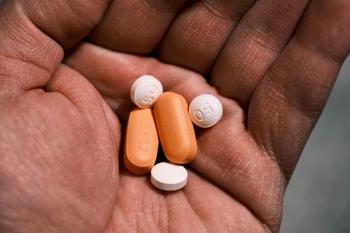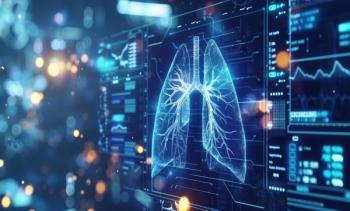
Clean Air Laws Linked With Improved Kidney Biomarkers, Study Finds
A quasiexperimental study conducted in China provides strong evidence that air pollution is linked to kidney impairment, which points to the importance of policy efforts to ensure clean air.
A correlation between kidney impairment and exposure to air pollution, as measured by ambient particulate matter smaller than 2.5 mcm (PM2.5), was shown in a recent study that compared the population’s kidney function before and after the reduction of PM2.5 in certain areas of China. Findings were
The study was conducted after China initiated the Clean Air Action Plan in 2013, which led to a rapid decrease of PM2.5 in the air of mainland China, giving the researchers the opportunity to conduct a difference-in-difference study on the causal effects of chronic exposure to PM2.5 on kidney function. The authors noted that another recent study had estimated that PM2.5 had been linked to 6.9 million cases of
The current study involved 5115 eligible adults with a mean (SD) age of 58.8 (8.9) years. The population of adults was based on the China Health and Retirement Longitudinal Study (CHARLS), which provided a database of information, including socioeconomic status and health conditions, on Chinese individuals aged 45 years and older. To ensure representativeness, about 20,000 participants were recruited using a 4-stage sampling approach across the country.
Waves of CHARLS surveys were launched in 2011, 2013, and 2015, and blood tests were conducted among participants in 2011 and 2015. The analysis described in this study is based on the 2011 and 2015 waves of surveys and blood tests, as there were no blood tests collected in 2013.
Kidney function was based on 4 clinical biomarkers measured in blood samples: serum creatinine (SCR), cystatin C (CYS), blood urea nitrogen (BUN), and uric acid (UA). Decline in glomerular filtration rate (GFR) was used as an indicator of CKD. Estimated GFR (eGFR) was calculated via equations using SCR (GFRSCR) or CYS (GFRCYS).
Elevated concentrations of BUN and UA also indicated kidney impairment. However, BUN and UA can signify other health problems, so eGFR was the preferred indicator of kidney impairment in this study.
The results of the study showed that in the 2011 wave, the mean (SD) values of GFRSCR, GFRCYS, BUN, and UA were 89.1 (9.7) mL/min/1.73m2, 82.7 (19.0) mL/min/1.73m2, 15.6 (4.4) mg/dL, and 4.4 (1.2) mg/dL, respectively. In the 2015 wave, the mean (SD) values were 86.3 (10.3) mL/min/1.73m2, 93.0 (19.5) mL/min/1.73m2, 15.7 (4.6) mg/dL, and 4.9 (1.4) mg/dL, respectively.
In adjusted models, each increase of 10 mcg/m3 in PM2.5 was associated with changes of –0.42 (95% CI, –0.78 to –0.06) mL/min/1.73m2, 0.02 (–1.16 to 1.20) mL/min/1.73m2, 0.38 (0.12-0.64) mg/dL, and 0.06 (0.00-0.12) mg/dL in GFRSCR, GFRCYS, BUN, and UA, respectively.
Sensitivity analysis revealed that rural residents were more susceptible to the effect of PM2.5 on GFRSCR, GFRCYS, and BUN than were urban residents. Additionally, the subgroup with the lowest educational level was more susceptible to the association between PM2.5 and GFRSCR.
For the difference-in-difference comparison, the participants were split into 2 groups. Those who lived in areas in which PM2.5 exposure decreased by more than 5.12 mcg/m3 from 2013 to 2015 were defined as the treatment group and the remainder acted as a control group.
The between-group difference in the change in a biomarker could be used to see the policy’s effect, as the treatment group had experienced a greater reduction in air pollution from the Clean Air Action Plan. By comparing differences between the 2 groups of participants, the study revealed that the law was associated with an increase in GFRSCR (0.22 mL/min/1.73m2) and GFRCYS (0.88 mL/min/1.73m2). It also revealed a decrease in BUN (–0.14 mg/dL) and UA (–0.16 mg/dL).
“Because the reduction in GFRSCR or GFRCYS and the increment of BUN or UA suggests kidney impairment, the results consistently revealed the benefit of PM2.5 reduction on kidney function,” the authors wrote.
The investigators noted that their findings were based on results from the CHARLS, which was not specifically focused on kidney function and may have missing information that can introduce bias. They also acknowledged the possibility of unmeasured longitudinal confounders that could have affected their findings.
Based on these findings, the researchers concluded that chronic exposure to ambient PM2.5 is linked to kidney impairment. The results suggest that clean air laws such as China’s can lead to health benefits for the kidneys in addition to environmental effects.
Reference
Han Y, Xue T, Kelly FJ, et al. Association of PM2.5 reduction with improved kidney function: a nationwide quasiexperiment among Chinese adults. Health Data Science. Published online January 18, 2022. doi:10.34133/2022/9846805
Newsletter
Stay ahead of policy, cost, and value—subscribe to AJMC for expert insights at the intersection of clinical care and health economics.














































